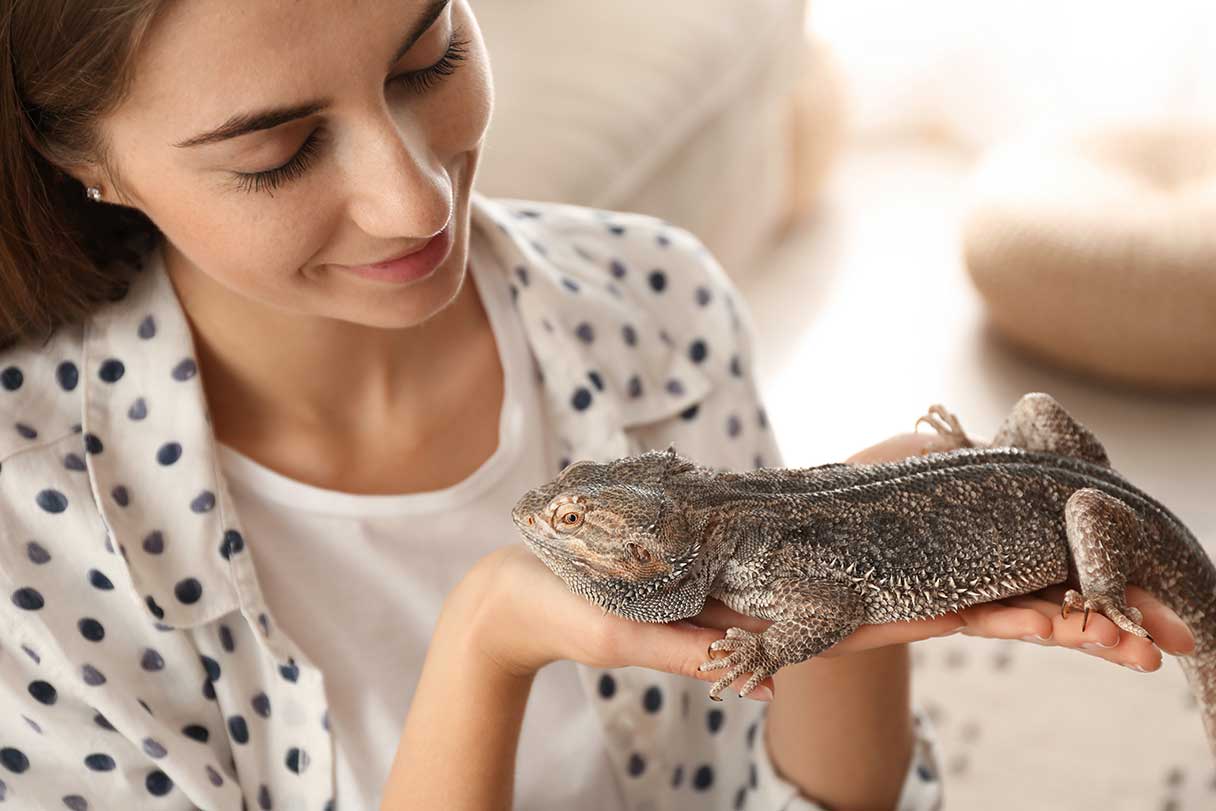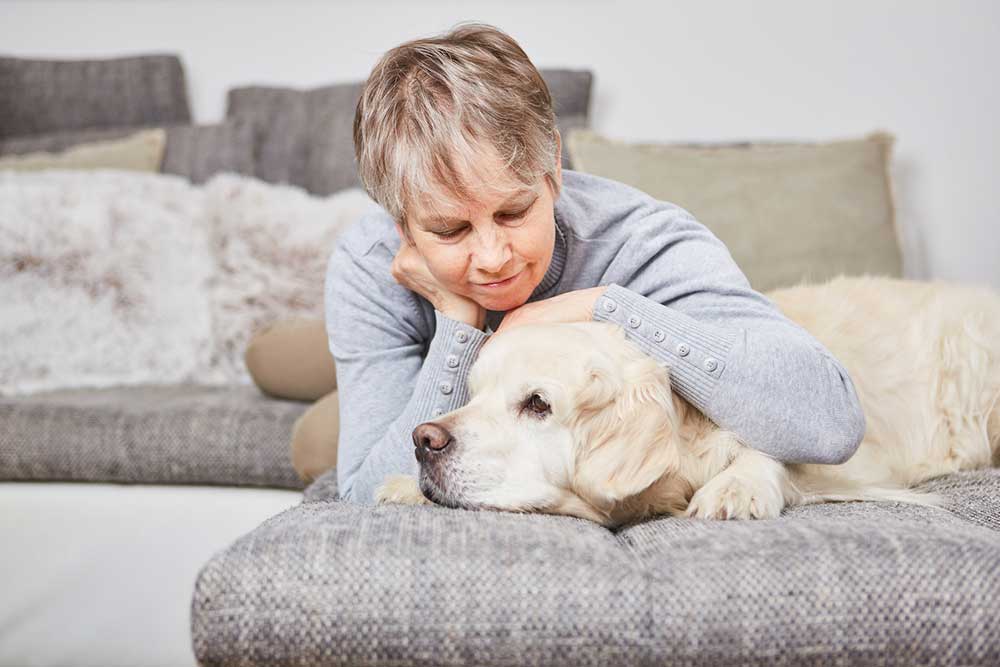Bearded dragons are well-known for being particularly hardy lizards — as long as they are properly looked after and cared for, they can be expected to live long and healthy lives. This is one of the many reasons they are considered to be among the best pet reptiles, making them especially popular with beginner pet owners.
But like all animals, bearded dragons can still suffer from a variety of diseases and other health complications. If you want to ensure a healthy and comfortable pet, it's important to be aware of this and have a basic understanding of the challenges you and your beardie may face.
Bearded dragons can show many signs of potential health issues, which can be easy to misinterpret or feel overwhelming. Fortunately, there are plenty of resources and tips available to help you monitor your dragon's health. This article provides a quick and easy guide to the most common signs that your bearded dragon may be sick.
1. Change in Appetite or Weight Loss
Bearded dragons are omnivores, which means they eat both plants and animals (in this case, insects). They should have a diet rich in leafy greens, a few fruit pieces as an infrequent treat, live insects — like crickets, dubia roaches, mealworms, phoenix worms and hornworms — gut loaded with a nutritionally dense meal and dusted with calcium. Multivitamins should be given a couple of times per month.
Beardies need the most food when they are juveniles to support their growth, but if your reptile is eating more or less than usual at any stage of life, they may be sick.
2. Lethargy or Difficulty Moving Around
Beardies need time out of their tank to bond with you and explore their world. Get to know what your bearded dragon likes to do, whether that’s watch TV with you, take a bath, dig around or even go for walks (yes, they make harnesses for bearded dragons!). Once you know your pet’s regular routine, it will be easier to notice if they are acting lethargic.
It’s also important for your reptile to get exercise so that they do not become obese, which can also cause health issues.
3. Diarrhea or Constipation
If you notice your bearded dragon having loose or runny stool, or if they are not defecating as usual, they may be ill. Your reptile’s stool should appear as a solid tube, brown in color with a white tip at the end. Your vet may want to test for internal parasites.
Constipation is common in bearded dragons and can be a result of dehydration or eating inappropriate material from their housing.
Providing your pet with a shallow water bowl that is large enough for both drinking and soaking can help them stay healthy and hydrated. Be sure to clean the bowl and add fresh water daily.
Bearded dragons don't like to drink much, so it is important to soak them three to four times per week in lukewarm water, and mist or sprinkle water on their head.
To avoid impaction from eating their bedding material, avoid sand or wood chips, and use reptile-safe carpet or paper towels.
4. Hanging Jaw/Open Mouth
If your pet appears lethargic and is lying with their mouth open — especially on the cool side of the tank — they may be having difficulty breathing. This behavior can also be a sign of metabolic bone disease (MBD). Your vet can test their blood calcium levels to determine if MBD is present. Radiographs can also show the density of the bones and the severity of MBD if present.
Note: It’s common for a bearded dragon to keep its mouth open while under the basking bulb. This is how they cool off and is normal for short periods of time.
5. Body Swelling
A swollen limb or tail may result from a broken bone, metabolic bone disease or a bacterial infection like tail rot. If your bearded dragon has fallen recently or had a skirmish with another (these are solitary creatures and should not be housed with other dragons), leading to swelling, a veterinarian can perform an X-ray to diagnose the issue.
6. Discoloration
A discolored or blackened mouth could indicate a bacterial infection known as mouth rot, often caused by unsanitary conditions and low temperatures.
Beardies can also develop darkened or blackened stomachs due to stress, such as when adjusting to a new home or if tank temperatures are improperly regulated. Males will often turn their beards a dark or black color to show dominance.
7. Eye Issues
Bearded dragons need to soak multiple times a week and always have access to fresh, dechlorinated water to stay properly hydrated. You should also mist your pet with a gentle spritz twice a day. Sunken eyes can be a sign of dehydration or may point to an infection.
A healthy bearded dragon has bright, clear eyes. Eye discharge may suggest infection, while dull eyes can indicate a shedding issue.
How to Care for a Sick Bearded Dragon
Any change in your bearded dragon's behavior or appearance may indicate illness, so it’s important to visit an exotic veterinarian as soon as possible. Treatment will vary based on what is affecting your pet.
To help prevent sickness, provide your reptile with a spacious, warm, humid and clean tank (a 50-gallon tank or larger is recommended for an adult bearded dragon). Add safe obstacles like logs, basking rocks and branches for climbing, but avoid using items from outside to prevent exposure to bugs, parasites and disease. Replace their water daily, and feed them a proper diet.
When to Bring Your Bearded Dragon to the Vet
If you notice any of the symptoms above, are experiencing an emergency or have concerns about your beardie, call an exotic veterinarian for help. Make sure your vet specializes in reptiles to ensure they understand your pet's unique needs, use proper handling techniques and have access to specialized equipment for examination, testing and treatment. In addition, it's essential that they are knowledgeable about the appropriate type and dosage of medication for your bearded dragon.
As a bearded dragon owner, it's important to not only know how to keep your reptile healthy but also recognize the signs of illness, ensuring your pet can live happily and healthily for many years to come.
CareCredit Credit Card Financing for Pets
Taking good care of your pet's well-being from nose to tail is essential. Make sure to stay up to date on their regular checkups at the vet to help keep your pet happy and healthy for a lifetime of love. You can use your CareCredit credit card for pet care throughout the year for routine veterinary services as well as emergencies and surgeries.* Use our Acceptance Locator to find a veterinarian near you that accepts CareCredit.
CareCredit is there for you and your pet every step of the way; continue your wellness journey by downloading the CareCredit Mobile App to manage your account, find a provider on the go and easily access the Well U blog for more great articles, podcasts and videos.
In addition to pet care, you can also use your CareCredit credit card for dentistry, cosmetic, vision, hearing, health systems, dermatology, pharmacy purchases, spa treatments and so much more within the CareCredit network. How will you invest in your health and wellness next?
Expert Reviewer
Dr. Kathy Wiederkehr (Wentworth), V.M.D.
Dr. Kathy Wiederkehr (Wentworth) has been practicing veterinary medicine at pet care facilities in California since 2001. Most recently, she served as medical director of the VCA PetPoint Medical Center and Resort in Irvine. She is a graduate of the University of Pennsylvania School of Veterinary Medicine and became board-certified as a diplomate in Canine and Feline Practice by the American Board of Veterinary Practitioners in 2010.
Author Bio
Abbie Mood is a freelance writer with more than 15 years of experience. She has worked with clients of all sizes to create compelling content, and she has written for the American Kennel Club, Marriott Bonvoy, Women's Health Online, Headspace and more.








